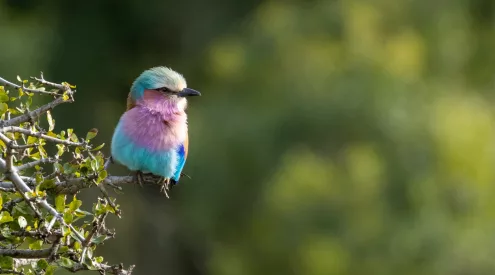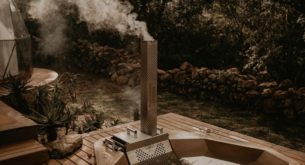I’m sticking my neck out just writing about this. There are so many conflicting views about animals such as caracal, jackal and even wild dog that one should steer clear of it, but a recent decision by the Western Cape government to issue 490 permits for the eradication of such animals made me acutely aware of this dilemma again.
Permits are valid for six months and allow each of the 50 holders to kill 10 animals a day – potentially, that’s 900 000 dead animals. They also allow otherwise prohibited methods such as night hunting and the use of artificial lights and permission was granted for the use of rubberised gin traps. While these seem to be kinder than steel-toothed gin traps, they can still cut off blood supply, fracture limbs and cause drawn-out, painful deaths. Although aimed primarily at jackals and caracals, non-targeted animals such as leopards are caught too.
People who react vehemently against this legislation should remember that in the Free State, North West, KwaZulu-Natal and Northern Cape, there’s no limit to the number of animals killed and more or less any method can be used.
CapeNature, which issued the permits in an attempt to control the number of predators killed by farmers, is quoted as saying it wants to ‘secure biodiversity while enabling a sustainable red meat industry’. And South Africa needs this industry not only to deliver juicy chops for the weekend braai, but also because it contributes substantially to the GDP. Figures differ vastly, but farmers claim that between 600 000 and 2,8 million small livestock are killed or maimed by predators annually, resulting in a loss of at least R1,4 billion a year. Staggering facts that support the plight of farmers.
Let’s look at the other side of the coin: animals caught in gin traps, even the ‘soft’ kind, don’t die quickly. In some cases, they try to chew off the trapped limb to free themselves. Still, a factory in Prince Albert manufactures 1 200 steel gin traps a month and up to 15 000 are used each year. Then there’s the widely known effects of poison on non-targeted species such as raptors and scavengers, but it’s still an accepted way to protect against predators.
Some farmers are slowly adopting other methods to guard their livestock. Anatolian shepherd dogs, old-fashioned human guarding (we know them as shepherds), preventative herding techniques and collars containing poison aimed at attackers are but a few of these.
At Modimolle, for example, Monate Conservation Lodge and the Endangered Wildlife Trust have introduced a successful programme to catch problematic cheetahs and recondition them to catch their normal prey. And owners of a Western Cape wine farm claim they’ve had no stock losses since they started leaving the radio on at night in the area where they keep their sheep.
People can’t seem to live in harmony with wild animals – rats, baboons, caracals, jackals, leopards and even cheetahs get our knickers in a knot. A farmer once said to me: ‘God gave me this piece of land and therefore I can shoot the baboons that steal my fruit.’
But we can’t ignore our role in the issue, taking more and more of the natural habitat to satisfy our ever-increasing needs, removing natural food sources, encouraging animals to become problems by feeding them. Are we at a point where all wild (and problem) animals we share this planet with should live only behind the fences of nature reserves because we couldn’t find a way to live with them?
For information on non-lethal methods, visit www.wwf.org.za, www.ewt.org.za or www.environment.gov.za.
Sources
Mail & Guardian, 12 March 2012.
Landbouweekblad, 14 February 2012.

















